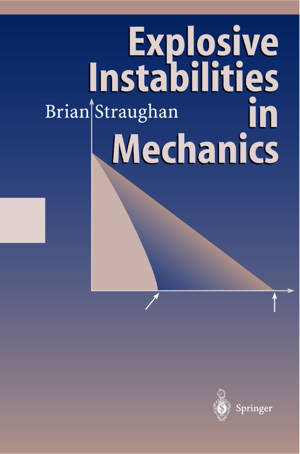
Door een staking bij bpost kan je online bestelling op dit moment iets langer onderweg zijn dan voorzien. Dringend iets nodig? Onze winkels ontvangen jou met open armen!
- Afhalen na 1 uur in een winkel met voorraad
- Gratis thuislevering in België vanaf € 30
- Ruim aanbod met 7 miljoen producten
Door een staking bij bpost kan je online bestelling op dit moment iets langer onderweg zijn dan voorzien. Dringend iets nodig? Onze winkels ontvangen jou met open armen!
- Afhalen na 1 uur in een winkel met voorraad
- Gratis thuislevering in België vanaf € 30
- Ruim aanbod met 7 miljoen producten
Zoeken
€ 52,95
+ 105 punten
Uitvoering
Omschrijving
The subject of blow-up in a finite time, or at least very rapid growth, of a solution to a partial differential equation has been an area of intense re- search activity in mathematics. Some ofthe early techniques and results were discussed in the monograph by Payne (1975) and in my earlier monograph, Straughan (1982). Relatively recent accounts of blow-up work in partial dif- ferential equations may be found in the review by Levine (1990) and in the book by Samarskii et al. (1994). It is becoming increasingly clear that very rapid instabilities and, indeed, finite time blow-up are being witnessed also in problems in applied mathematics and mechanics. Also in vogue in the mathematical literature are studies of blow-up in systems of partial differen- tial equations, partial differential equations with non-linear convection terms, and systems of partial differential equations which contain convection terms. Such equations are often derived from models of mundane situations in real life. This book is an account of these topics in a selection of areas of applied mathematics which either I have worked in or I find particularly interesting and deem relevant to be included in such an exposition. I believe the results given in Chap. 2 and Sects. 4. 2. 3 and 4. 2. 4 are new. This research was partly supported by a Max Planck Forschungspreis from the Alexander von Humboldt Foundation and the Max Planck Institute.
Specificaties
Betrokkenen
- Auteur(s):
- Uitgeverij:
Inhoud
- Aantal bladzijden:
- 197
- Taal:
- Engels
Eigenschappen
- Productcode (EAN):
- 9783540635895
- Verschijningsdatum:
- 22/06/1998
- Uitvoering:
- Hardcover
- Formaat:
- Genaaid
- Afmetingen:
- 163 mm x 239 mm
- Gewicht:
- 408 g

Alleen bij Standaard Boekhandel
+ 105 punten op je klantenkaart van Standaard Boekhandel
Beoordelingen
We publiceren alleen reviews die voldoen aan de voorwaarden voor reviews. Bekijk onze voorwaarden voor reviews.











